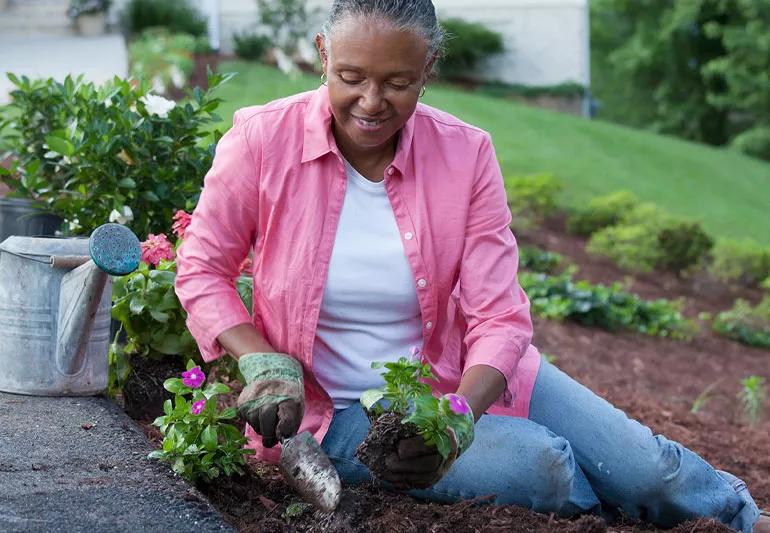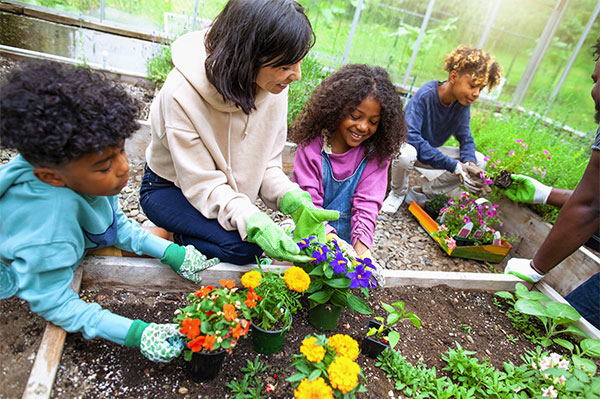Gardening Tips to Increase Your Aesthetic Allure and Area Attraction
Gardening Tips to Increase Your Aesthetic Allure and Area Attraction
Blog Article
Professional Gardening Tips for Creating a Lasting and Eco-Friendly Yard
Starting the journey to produce a eco-friendly and sustainable garden entails a series of calculated selections and practices that not only enhance the appeal of your area yet likewise contribute favorably to the environment. By choosing native plants that are well-suited to your region, you can decrease reliance on chemical plant foods and pesticides while offering important assistance to local wild animals. In addition, including water preservation techniques and natural gardening approaches plays an essential role in maintaining a healthy and balanced community. To uncover more sensible techniques and professional understandings, let us check out the key components that specify an environmentally mindful garden.
Choose Native Plants
Choosing indigenous plants for your yard is an essential action towards attaining sustainability. Indigenous plants are naturally adjusted to the neighborhood environment and dirt conditions, making them much more durable to local parasites and conditions. This reduces the need for chemical pesticides and fertilizers, therefore minimizing environmental influence. Additionally, native plants typically need less water when developed, contributing to a lot more effective water usage.
Beyond their practical advantages, indigenous plants play a critical duty in supporting regional biodiversity. They offer vital habitat and food sources for native wild animals, consisting of pollinators such as butterflies, birds, and bees. This promotes a balanced community, which is important for the health and wellness of your yard and the surrounding setting.

Implement Water Preservation
Applying water conservation strategies is crucial for maintaining a lasting yard. Efficient water usage not only reduces the ecological influence yet additionally ensures that plants obtain ample hydration without wastefulness.
On top of that, mulching is a beneficial technique for preserving water. By using a layer of organic mulch, such as wood chips or straw, around the base of plants, garden enthusiasts can decrease dirt evaporation and maintain consistent dampness degrees. Mulch also helps manage dirt temperature level and reduces weed growth, further contributing to plant wellness.
Rain harvesting is an additional lasting method. Installing rain barrels or other collection systems enables gardeners to capture and save rain, which can later on be used during dry durations. This not just conserves community water but additionally offers a natural, chemical-free resource for irrigation.
Last but not least, picking drought-tolerant plant types can substantially minimize water demands. These plants are adjusted to prosper in low-water conditions, making them excellent for eco-friendly yards. gardening tips. Executing these water preservation techniques will certainly promote a resistant, sustainable yard
Use Organic Horticulture Techniques

Pest administration in a natural yard depends on incorporated pest management (IPM) methods. These consist of motivating advantageous bugs, utilizing natural killers like lacewings and ladybugs, and executing plant turning to interfere with pest life cycles. Companion planting, where specific plants are expanded with each other to fend off parasites or attract useful insects, is one more reliable technique.
Weed control is taken care of via mulching and manual removal, as opposed to counting on herbicides. Compost not only suppresses weeds however likewise saves wetness and boosts dirt health and wellness as it breaks down. Organic composts, such as straw, timber chips, and leaves, are especially beneficial.
Develop Wild Animals Environments
Producing wildlife environments within your yard not only enhances biodiversity however additionally supports the community's balance. Deliberately areas that attract and maintain regional animals, you can produce a flourishing micro-ecosystem that profits both plants and animals. Begin by incorporating indigenous plants, as these are appropriate to your neighborhood climate and provide essential food and sanctuary for wildlife. Indigenous flora sustains a variety of insects, birds, and tiny mammals, adding to the environmental network.
Take into consideration adding a water attribute, such as a pond or birdbath, go to this site to supply a regular water source. Water aspects bring in a variety of types, from amphibians to pollinators, enhancing the garden's vigor. Additionally, setting up birdhouses, bat boxes, and insect resorts provides risk-free nesting websites and encourages biodiversity.
Leave some areas of your garden undisturbed, permitting leaf litter and dropped branches to accumulate. By prioritizing these lasting methods, your garden can become a haven for regional wild animals, advertising eco-friendly health and sustainability.
Practice Composting and Mulching
An essential element of lasting horticulture, composting and mulching, significantly improves dirt health and decreases waste. Composting involves reusing natural products such as kitchen area scraps, turf clippings, and leaves. These products decay to develop nutrient-rich compost, which serves as a natural plant food. Unlike synthetic plant foods, garden compost enhances the soil with vital nutrients and advantageous microorganisms, cultivating a healthier yard ecosystem.
Mulching, on the other hand, includes covering the dirt Click Here surface with not natural or organic products, such as straw, timber chips, or shredded leaves. This technique provides several benefits: it conserves soil dampness, suppresses weed development, and moderates soil temperature level. Mulch likewise gradually breaks down, including raw material to the soil and additional boosting its fertility.
To exercise effective composting, guarantee your garden compost stack has a balance of eco-friendly materials (abundant in nitrogen) and brownish products (abundant in carbon), maintaining sufficient aeration and wetness. gardening tips. Regularly turning the pile speeds up decay. For mulching, use a 2-3 inch layer around plants, guaranteeing it does not straight speak to stems or trunks to avoid rot
Conclusion

Picking native plants for your garden is an essential step towards achieving sustainability.In addition, integrating native plants can improve the visual charm of your garden. These plants are adapted to grow in low-water conditions, making them excellent for environment-friendly gardens. Carrying out these water conservation techniques will certainly promote a resistant, sustainable yard.
In conclusion, developing a lasting and environmentally friendly yard entails the tactical option hop over to here of native plants, the adoption of water preservation methods, and the implementation of organic horticulture techniques.
Report this page